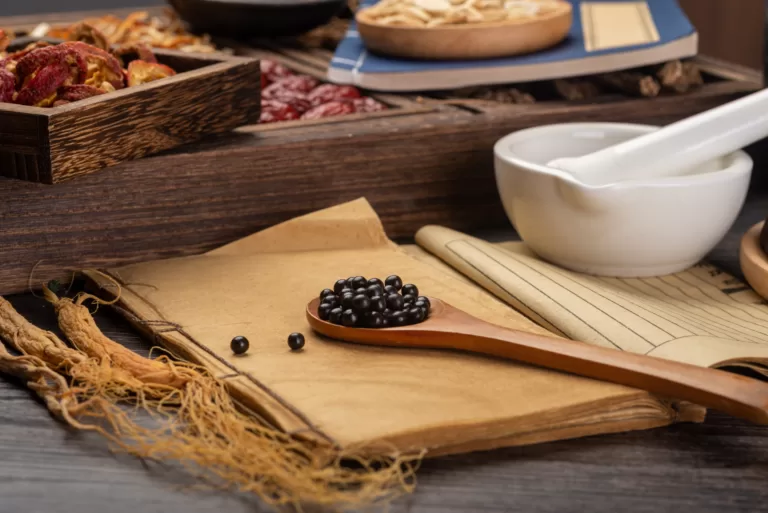Traditional Chinese medicine manufacturing process
HO CHEE MENG
Crafting high-quality traditional Chinese medicine products through the combination of traditional craftsmanship and scientific methods
Traditional Chinese Medicine (TCM) primarily consists of two major categories: Chinese herbal materials and Chinese patent medicines.
Chinese herbal materials refer to raw materials derived from natural plants, animals, and minerals. These materials are classified according to their properties, flavors, and functionalities. They are generally divided into four main categories: herbs, woody plants, minerals, and animals. Each category is further broken down into several varieties.
Chinese patent medicines refer to complex medicinal formulations made from Chinese herbal materials following certain proportions, methods, and techniques. Depending on the different preparation methods and applications, Chinese patent medicines can be further classified into several categories such as oral preparations, topical preparations, injections, etc. Examples include honey pills, pills, powders, honeyed water pills, wine preparations, extracts, patches, and more.

What is a "Honey Pill"?
Honey pills, also known as "Mi Wan" in Chinese, is a traditional form of Chinese medicine. It involves the use of refined honey as a binder to form medicinal powder into spherical pills through repeated kneading. Due to the viscosity of honey or syrup, these pills have excellent adhesion and moisturizing properties. They dissolve slowly, providing a mild and sustained effect, are easy to consume, and have a sweet taste, making them easily accepted by people.
The production process of honey pills requires attention to the size and shape of the pills, as well as the quantity and evenness of the mixed honey or syrup. Furthermore, temperature and humidity control during the production process are necessary to ensure the quality and stability of the pills. The ingredients and efficacy of honey pills can be adjusted according to needs by choosing different medicinal materials. They are commonly used for treating chronic diseases and weakness-related conditions, such as regulating Qi and blood, treating coughs, and poor digestion. Honey pills can be categorized into two types: large honey pills and small honey pills.
The process of making "Honey Pills"
"Honey Pills" are a traditional form of Chinese medicine, made by combining refined honey with medicinal powder, repeatedly kneading it into spherical pills, and then drying. The manufacturing process is as follows:
- Preparation of materials: Select high-quality medicinal materials, clean them, dry them, and grind them into powder; prepare refined honey.
- Mixing and stirring: Mix the medicinal powder with the refined honey, and stir thoroughly until a uniform mixture is formed.
- Pill forming: The mixture is shaped into slabs or bars and then formed into small spherical pills using a pill-making machine.
- Baking the honey pills: The formed honey pills are placed in an oven and baked until the surface is dry and the interior is non-sticky, helping to maintain their shape and extend their shelf life.
- Packaging and storage: The completed honey pills are packed into bottles, sealed with beeswax, and stored in a dry, cool place.
It is important to note that the manufacturing process of honey pills requires strict control of parameters such as temperature, humidity, and proportions to ensure the stability and consistency of the medicinal effect. At the same time, it is necessary to follow the norms and standards of drug production to ensure the quality and safety of the honey pills.
What is Powdered Chinese Medicine?
Powdered Chinese Medicine is a form of Chinese medicinal preparation made from powdered medicinal materials, typically used for oral administration or external application. Unlike traditional Chinese medicinal forms such as decoctions or pill forms, powdered Chinese medicine does not contain binders, thus it has better solubility and absorbability.
Powdered Chinese medicine is usually composed of a combination of various medicinal material powders to achieve various effects such as treatment, regulation, and health preservation. Different powdered Chinese medicines have different manufacturing methods, usages, and indications, and need to be selected and used according to specific situations.
When using powdered Chinese medicine, it is necessary to follow the guidance of a doctor or Chinese pharmacist, pay attention to the dosage and method of administration to avoid adverse reactions or drug interactions. At the same time, storage conditions need to be monitored to avoid moisture and direct sunlight, in order to ensure its quality and efficacy.
The process of making Powdered Chinese Medicine
Powdered Chinese medicine is a form of Chinese medicinal preparation, which is made by processing medicinal materials into powder, then going through a series of processing, mixing, and packaging steps. Here's how it's made:
- Material Preparation: Select high-quality medicinal materials, wash and dry them.
- Grinding into Powder: The medicinal materials need to be ground into fine powder, and the ground powder needs to be sieved several times or for several days to reach above 1200-2000 mesh (the finer the powder, the higher the absorption effect, and the better the efficacy).
- Processing and Mixing: Mix various medicinal material powders in proportion, carry out sufficient mixing so that the mixture has a certain flowability and good uniformity.
- Packaging and Sterilization: Put the processed powdered Chinese medicine into sealed bags or bottles, and carry out sterilization treatment to ensure the hygiene and safety of the product.
- Packaging and Storage: Put the sterilized powdered Chinese medicine into suitable packaging bags or bottles and store them in a dry and cool place.
It should be noted that during the manufacturing process, temperature, humidity, and processing time need to be strictly controlled to ensure the quality and efficacy of the powdered Chinese medicine. At the same time, relevant production standards and regulations need to be followed to ensure the safety and effectiveness of the powdered Chinese medicine.
